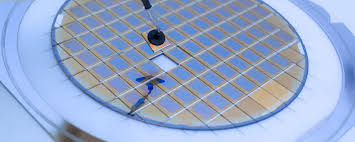
Aug 07, 2024

The increasing demand for precise and efficient semiconductor manufacturing methods continues to rise due to the rapid expansion of technologies such as 5G, artificial intelligence, and advanced consumer electronics. In response to this trend, Transpire Insight has conducted a comprehensive analysis of the Global Plasma Dicing Systems for Semiconductor market. Plasma dicing has emerged as a highly attractive solution for the semiconductor industry, offering non-contacting dicing, reduced damage, and improved yields compared to traditional saw dicing techniques.
Introduced in the 1990s, plasma dicing revolutionized the semiconductor industry by providing a non-mechanical method for cutting wafers with exceptional precision. The utilization of reactive ion etching ensures minimal physical wear and tear, making it ideal for cutting ultra-thin and complex wafers demanded by modern semiconductor devices. Unlike mechanical methods that can introduce stress and damage, plasma dicing offers a cleaner and more controlled process, enhancing the reliability and longevity of the final product, as per Transpire Insight.
The Global Plasma Dicing Systems for Semiconductor market is heavily influenced by advancements in semiconductor device designs and the need for more efficient manufacturing techniques. Companies striving to enhance device performance while reducing costs are turning to plasma dicing to maximize chip production on each wafer. This technology minimizes waste, improves efficiency, and allows for the creation of smaller, more complex dice essential for cutting-edge electronics like smartphones, IoT devices, and wearable technology.
As the industry transitions to 5G and the demand for high-performance semiconductors grows, plasma dicing systems are poised to play a critical role in meeting these evolving needs while aligning with environmentally friendly manufacturing practices.
Transpire Insight believes, the plasma dicing systems market is experiencing significant segmentation by regions, with Asia-Pacific leading the way due to its high semiconductor production. Countries like South Korea, Taiwan, and Japan are heavily investing in semiconductor technology to stay ahead in the industry. Meanwhile, North America and Europe are also focusing on research to enhance plasma dicing technologies for future semiconductor requirements.
Despite the potential, plasma dicing faces challenges such as high setup costs and a learning curve in the integration process. However, as the technology matures and more companies adopt plasma dicing, the long-term cost savings and quality improvements are expected to outweigh the initial investment, making it a crucial aspect of the semiconductor industry's future.
According to the report from Transpire Insight on Global Plasma Dicing Systems for Semiconductor, plasma dicing is increasingly becoming a key player in semiconductor manufacturing towards modern mass production demands. With the semiconductor industry facing complexities in device manufacturing, there is a growing need for more efficient, precise, and sustainable methods of production, with plasma dicing systems expected to play a crucial role in meeting these challenges. As the technology advances further, it is likely to become even more essential in the production of the next generations of electronic devices, showcasing its importance in shaping the future of the semiconductor industry.
Drop us an email at:
Call us on:
+91 7666513636